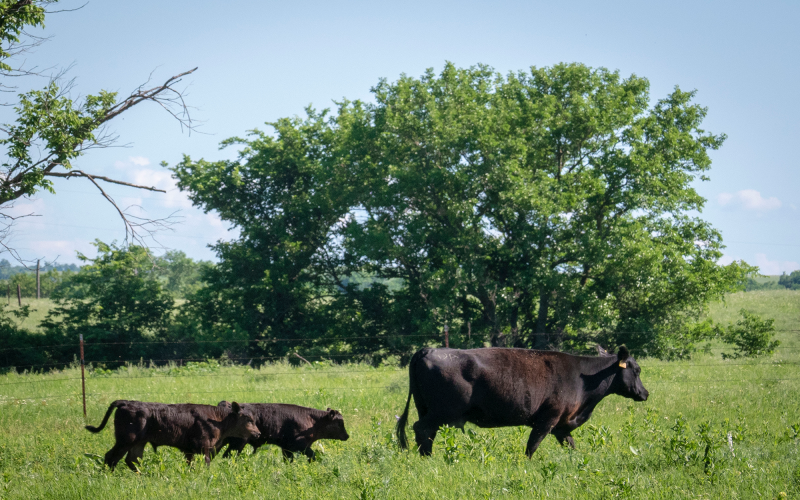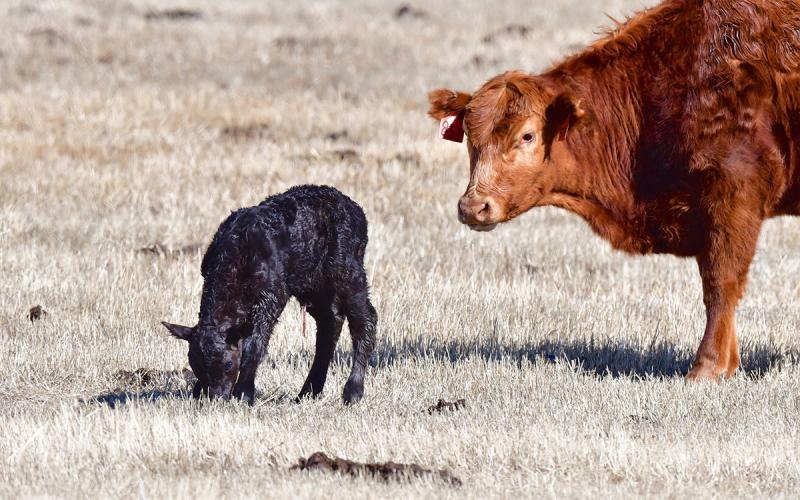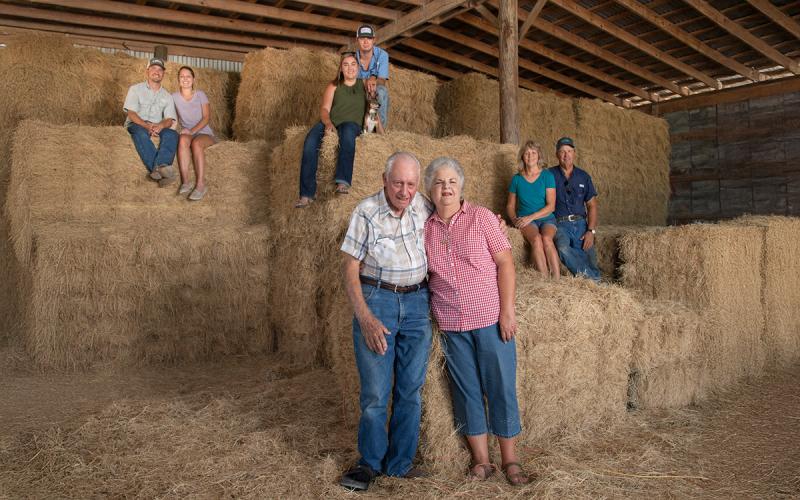Recently, the South Dakota Grassland Coalition and SDSU Extension held workshops across the State focused on sharing information from experienced livestock producers who have switched to a calving date more in sync with nature. Producers from some of the state’s most challenging landscapes shared decades worth of information and data, and several key themes emerged as important considerations regardless of timing, location, or size of the operation.
What does it mean to ‘calve with nature’?

This was perhaps the most intriguing topic discussed at the workshops. Strictly from a biological standpoint, calving with nature would point towards a May/June time period that is consistent with when young wildlife tends to be born or emerge. Consider animals coming out of hibernation, nestlings hatching, or when wild fawns, kids, and calves are born. Generally, this emergence coincides with the land also awakening with spring forage, insects, and nutritional food sources for both mother and young. Consider also that mothers have a few weeks of exercise and high nutrition on green forage prior to parturition, helping them achieve prime condition to ready themselves for birth. Ironically, there is an underlying belief, even among some experienced livestock producers, that cattle are different than other animals and naturally calve earlier. Early calving is a product of human management decisions, not biology, and it starts with breeding timing. Certainly, there are many considerations that drive the decision to an earlier or later calving date, but the key message here is that producers have a lot of control over when their cattle calve.
Why calve with nature?
Ultimately, the ‘why’ came down to a few simple, but very important considerations.
Animal health: The first key consideration, as discussed above, was the natural timing and rhythm of the calving cycle. Cow condition, nutrition, calving ease, and other factors point toward late spring or early summer as most natural. Closely related was the desire to avoid congestion of animals in barns, mud, and snow and the human labor associated with calving in those conditions. Cattle, like wildlife, are pre-disposed to being able to birth their young on their own. A cow calving on green pastures in May usually will not have the same challenges as a cow calving in mud in March. But there are some caveats to this, so read on to the ‘How do I switch?’ paragraph below.
Human health: Early calving in snow, mud, or congested conditions requires labor. Not only labor, but labor at all hours of the day and night which can lead to high stress and poor relationships with family and/or hired help. Calving in these conditions is often tense and stressful on both people and animals. Improved human health, reduced stress, and improved family relationships were often cited as key considerations that drove change to a later calving date.
Financial health: The bottom line for the financial argument is drastic savings in input expenses to maintain the cow throughout the winter months. Producers who have switched to later calving need not maintain their cows in top condition in the worst of the winter months when feed and yardage expenses are highest. Couple that with electricity, equipment, veterinary/medical, labor, and other expenses associated with calving during the snowy months and it’s easy to see how quickly expenses can add up related to the upfront investment per calf. If calving at a later date, especially when calving on pasture, producers can curb cow maintenance expenses, calf health expenses, and overall input costs.
Time: Across the board, producers who have switched also cited having more time to invest into other activities. Ironically, the long-held notion that calving later competes with farming operations tends not to hold true. Those who have switched to a later calving date cited calving ease, less labor, less time invested in managing cows, and more time for other aspects of the operation, including field preparation and planting time, as one of the greatest benefits to later calving.
How do I switch?
Here things get somewhat complex. The first step is to evaluate, evaluate, evaluate. While it was the general consensus that most producers would have the ability to move calving dates, it was also reiterated that no move should be made without a comprehensive game plan that considers several factors. All recommended working with a coach or trusted mentor if considering a move to later calving, and all reiterated the need to work with their financial advisor or lender to create an appropriate financial plan.
To move fast or slow? This is open to debate. Some recommend moving slowly toward a later date, say a week or two at a time, while others recommended making the move toward a new date all at once. The key to the decision of moving quickly or slowly ultimately depends on what type of resources are available and how well one can handle the fall-out of animals that might not fit the new program. Again, working with a local coach or mentor who has successfully transitioned to a later calving date is recommended.
Resource assessment: Consider infrastructural, human, land, and financial resources. While later calving tends to remove the pressures on most resources, it is still critical to evaluate resources within individual farm/ranch situations. One of the most important resource assessments to consider is the overall management of the breeding program and the ability to house bulls longer in the summer prior to breeding. Some recommended a creative solution to bull management was to share bulls with another producer who breeds earlier.
Cow management: Today’s cows are built bigger and designed to milk heavier. March calving cows, if switched to a later date, may have issues with overproduction of milk. These cows may not fit your long-term strategies, so a management plan for heavy milking cows may be needed. This is a complex topic that cannot be fully addressed here. Again, seek out coaching on the type of cow to retain, purchase, or develop that is best suited to your environment and situation.
Marketing: Transitioning calving dates invariably means some cows, heifers, or bulls will not fit well with the new program. Most producers who have switched have realized these were ultimately the most expensive and highest maintenance animals in the herd anyway. A culling and marketing strategy is key and should be consistent with overall ranch plans and/or drought plans. As one producer stated, culled livestock always have value, the key is to maximize that value by timing with market demand.


